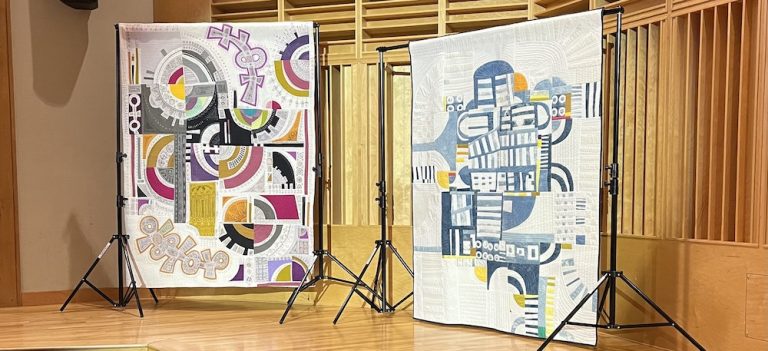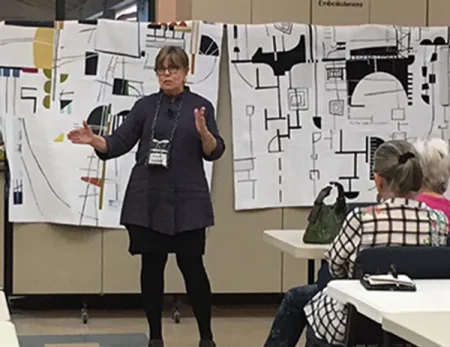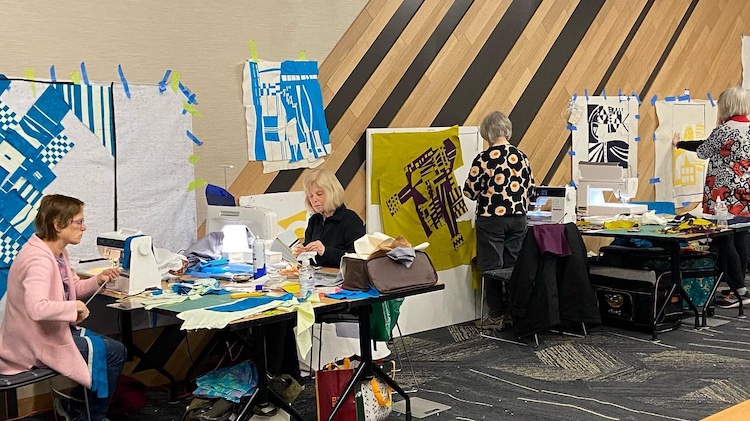
Have you ever made a quilt where you end up asking yourself, “What Was I Thinking?” You might have chosen fabrics outside your comfort zone. Or the prints that looked so delightfully stunning in the quilt shop suddenly loom monstrous and muddy, and maybe even a bit mouthy on your design wall. Or perhaps the design is just not “you?”
Even worse, did you make a quilt that someone else looked at and asked, “What were you thinking?”
The guild’s March guest lecturer, Irene Roderick, used this actual question in describing her work. But then, she went on to explore the feelings that might be behind it.
Because Irene works in an improvisational way – using no pattern, just placing one fabric scrap in the center of her design wall, then adding to the design one piece at a time – her process is fluid, intuitive, creative, and very “in-the-moment.” As she looks back on her work over the years, she sees how her art tapped into what was going on in her life at the time.
During the COVID lockdown, for instance, Irene had no contact with “real” people. Although she continued to teach on Zoom, “everyone was two inches high.” She recalls feeling lonely, and that she needed “real-sized people” around her in her tiny house. So she created “Celebration of Indigo,” three life-sized guardian figures that shared her space and lived with her day to day. Indeed, that was what she was thinking when she made that quilt.


When making a SafeHouse quilt, many of us wonder about the recipients. Do they have children? Do they have a job outside the home? Are they afraid to go back home? What lies in their future? And, so, when we choose the fabrics and designs for these quilts, maybe these questions are in our thoughts. We may have a sense of urgency, almost as though we need to work quickly, because someone is waiting for this quilt for warmth, for comfort, and to tell them it will be okay. They are not alone in the world.
So, I encourage you to look at fabric, designs, and quilts with new eyes. The work of our hands and minds is intensely personal. No one knows what is going on in our life. No one, that is, except our quilts. They see all, they know all. And they can tell all, if we just take a moment to really look at them, and think about them. Our quilts mark time, events, moods, and people; they reveal relationships, and successes, failures. The touch of our fingers has worked into the fabric itself our hopes, our dreams, and our concerns. Our creations hold our life stories.
Does this sound like a good reason to photograph your quilts, wall hangings, and art through the years? Maybe start a quilt journal? We may not get around to writing a memoir or an autobiography in the traditional sense. But we can take heart in knowing that our quilts are doing just that. As the years go by, we will have more to say, and it will all be there in our quilts.